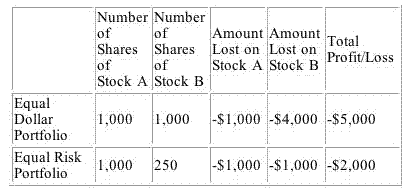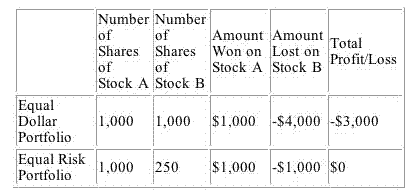What to Read Before You Invest
These were the secrets that started it all…
Risk management is a crucial concept every successful investor should champion. And it all starts with correct position sizing. Position sizing is vital to managing risk and avoiding the destruction of your portfolio with a single trade. Our position size calculator will help you figure out the proper number of shares to buy or sell in order to maximize your return and limit your risk.
The Oxford Club (the publisher of Investment U) recommends putting no more than 4% of your equity portfolio in any single stock. And its policy is to never let a stock fall more than 25% below the purchase price without selling it. On top of that, we recommend a 25% trailing stop. That way if you take a maximum loss of 25% on your maximum position size of 4%, the value of your portfolio has fallen only 1%.
Of course, there is more to risk management than just proper position sizing (including proper stock selection and asset allocation). Learn more about how you can maximize your returns and limit your risk with these investment tools.
When investing, you have a couple of choices when position sizing: Equal dollar weighting, versus equal risk.
To compare the two risk management strategies, let’s look at how each is done. For simplicity, I’ll talk about stocks, but the same concepts can be applied to futures, options and currencies.
And it’s this risk-based part of the equation that I’ll talk about here. So let’s do a quick calculation to see how it works…
Let’s say you’re willing to invest $100,000 and are okay with a 1% downside risk per trade. That’s $1,000.
When the first trade comes along, your strategy dictates that you’ll get out if the stock moves $2.00 against your position. Since you’re only risking $1,000 total on the trade, here’s the math for how many shares to buy:
And when you compare this risk-based position sizing method with just allocating equal dollar amounts across trades, you have an advantage. Let’s look at the numbers…
To do this comparison, we’ll look at two portfolios that contain the same two stocks. To make this even easier, we’ll say both stocks are $50 each.
However, Stock A is a slow-mover with very low volatility, so we set our stop-loss/trailing stop just $1 below the entry price. But Stock B has a very high volatility, so we set the stop-loss $4 below the entry price.
Let’s look at what happens if we encounter a little bit of market volatility and we hit the trailing stops on both stocks:

So it’s easy to see that for stocks with widely varying stops, an equal dollar portfolio can take on too much extra risk – especially if stocks are lower priced and volatile.
Another scenario is when the more volatile stock hits its trailing stop. And the less volatile stock wins an amount equal to its stop amount.

In this scenario, you have one winning stock and one losing stock. Yet in the equal dollar portfolio, you wind up losing big. But would end up breaking even with the equal risk portfolio.
Without drawing a new table, you can easily see that if both stocks move in your favor, you can make more money. That’s with the extra money invested in the equal dollar portfolio. But the increased profit is in proportion to the increased risk (see the risk % field in our position size calculator).
And in general, when taking on one unit of extra risk, you don’t want to get the possibility of only one unit of extra return. But since we obviously can’t guarantee which trades will work, a strategy that equalizes risk makes intuitive sense as a solid risk management strategy.
One final note: If your strategy uses a set percentage for a stop-loss or trailing stop (25% of a stock’s price, for example), then the “equal dollar amount” and “equal risk” portfolio position size becomes mathematically the same!
So folks that are using a 25% trailing stop are, in fact, using an equal risk strategy if they put equal dollar amounts into each trade.
Everything we do – asset allocation, trailing stops, position-sizing and stock selection – is done with an eye to not only maximize returns but also limit the risk we’re taking on.
It’s fine if an individual stock grows to become a significant percentage of your total portfolio, provided you are running a trailing stop behind it to protect your gains.
But don’t let your confidence in any stock – or any stock picker – allow you to abandon smart money management principles.
Did you like our Position Size Calculator? Visit our Investment Tools page to see our other calculators.
Become a smarter, more confident and more successful wealth builder with the free Investment U e-letter.
By submitting your email address, you will receive a free subscription to the Investment U e-letter, and offers from us and our affiliates that we think might interest you. You can unsubscribe at any time. Privacy Policy
These were the secrets that started it all…
Investors with a low budget can use risk tolerance to inform their investing strategy.